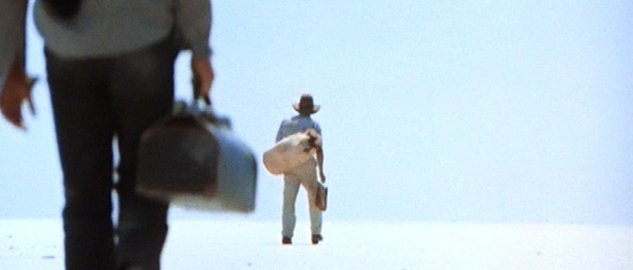Clip description
Lost in the desert, on their way to join up, Archy (Mark Lee) and Frank (Mel Gibson) discuss politics, patriotism and the reasons for war.
Curator’s notes
Gallipoli is partly a film about innocence and purity of heart, and landscape is an important element in that theme. The stark desert setting for this scene is almost abstract, as if the two friends are crossing from one state of mind to another – perhaps from boyhood to manhood. It also has Biblical overtones, as a trial in the desert that must be overcome before they can proceed to their destinations.
Before this scene, the Western Australian landscape is shown more realistically. The stylisation in this clip emphasises that the characters are undergoing a transition. The dialogue, about the politics of the war, also reflects differences in attitude – Archy’s obedience versus Frank’s pragmatism.





